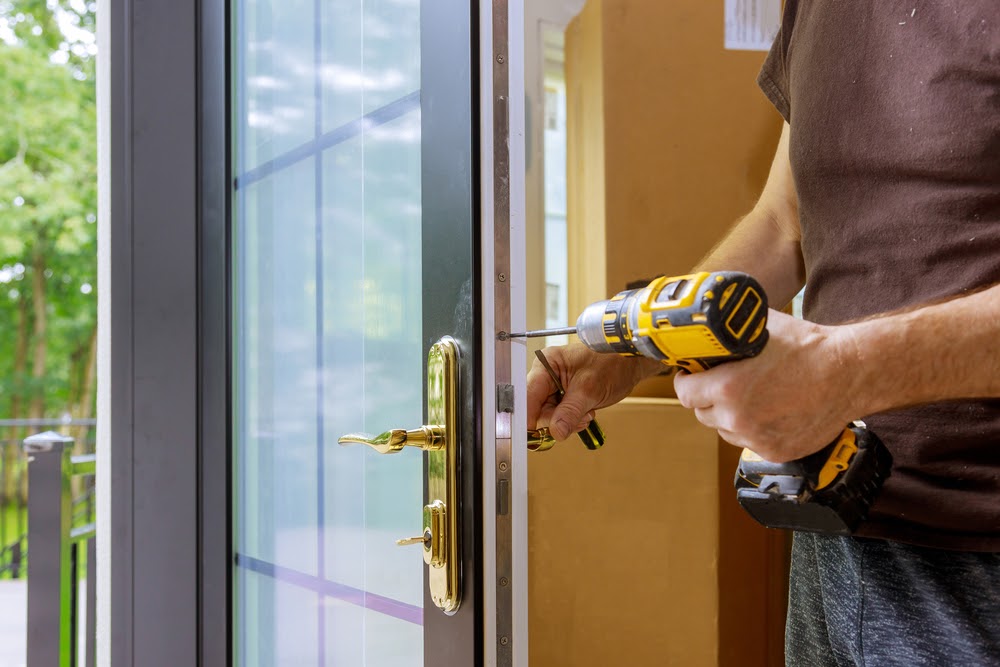Switching to Energy-Efficient Front Doors Shuts the Door on Energy Waste
There are many hidden energy drains in the home that can cause a bump in energy costs. One of the most expensive uses of energy is heating and cooling, and anything that lets that precious hot or cold air escape might be causing the HVAC to do more work, and, thus, boosting that bill. Doors and windows can get leaky over time. Gaps in seals let the elements in, and, unfortunately, can add to energy costs.
Switching to energy-efficient front doors can help shut the door on energy waste, though. These doors are designed to be well insulated so that the air outside doesn’t affect the temperature of the home. Here’s what homeowners need to know about these doors.
Look for a Specific Label
Homeowners might be used to eyeballing appliances for the ENERGY STAR logo when they are researching energy-efficient appliances. While ENERGY STAR labels will be featured on doors. For doors, however, homeowners also need to look at another label: the National Fenestration Rating Council (NFRC).
This is the label that will help homeowners figure out the energy-efficiency of new doors. The Department of Energy explains, however, that any door that is predominantly made of glass (think sliding doors for the porch) will have an ENERGY STAR label (if applicable) as these doors are considered windows.
The Department of Energy that the NFRC label on doors will include both the solar heat gain coefficient (SHGC) and the u-factor. These are both important factors that denote energy efficiency. The u-factor ranges from 0.00 to 2. Lower values are better. The SHGC ranges from 0 to 1; the number value is important based on climate. The Department of Energy explains that those living in cooler climates should look for a higher SHGC, but warmer climates need a lower SHGC.
Doors are constructed from different materials, and certain materials may offer better insulation and/or energy efficiency. What is the most energy-efficient material? According to the Department of Energy, steel and fiberglass options are the best for maximizing energy-efficiency.

The Price of Energy Efficiency
Replacing a front door with an upgraded energy-efficient option might be an investment. However, the size and materials may factor into the price, too. Homeowners should go into any home improvement project with a budget. There will be a range of options, but homeowners might need to sift through those choices to find the best one.
Understanding the energy efficiency of that door means that homeowners need to really look at the label. Find the u-factor and SHGC that is applicable to the climate needs. The front door should be a barrier that keeps out the elements and also locks in cool or warm air from the HVAC.
Some doors could cost less than $200, while others soar into the thousands. Again, size, composition and other factors play a role in cost. The label, however, can tell homeowners what they need to know about the protective factors of that door!
Older Doors and Energy Efficiency
Over time, doors could become less energy efficient. Weather stripping could wear down and cause leaky areas around the door. Can homeowners make their older doors more energy efficient?
Homeowners can take measures to ensure that the door isn’t becoming an energy drain. Family Handyman offers an article that explains how one homeowner transformed his old door into a more energy efficient option. The DIY fix? Aluminum and vinyl weather stripping! Jeff Gorton, the associate editor of Family Handyman, kept his century-old door in the process…and saved a LOT of money, too!
Homeowners might be able to take on Gorton’s project. This DIY trick could be an option for those with historic doors that they don’t wish to replace.

Simple Tips and Tricks to Stop Energy Leaks
All doors leading to the outdoor space could be a source of energy leaks; windows also could feature gaps, too. When homeowners are replacing their front door or replacing the weather stripping on their front door to improve energy efficiency, it’s a great time to check other doors and windows, too.
Old weather stripping around both windows and doors can lead to drafts. During summer, though, hot air also could creep into the home. A more active HVAC will drive up energy costs. So homeowners should audit those windows and doors.
Even when windows and doors are properly insulated, small habits could help keep the home from feeling drafty (in winter) or unbearably warm (during summer). Close the drapes during summer to keep the hot sun from pouring into the home. But winter temps could benefit from the warm light. Also make sure that doors and windows are shut tight; sometimes small gaps can remain.
Add more insulation to windows with film insulation. This is easy to install and can keep out drafts during winter. However, when homeowners are replacing the weather stripping around doors and/or windows they might not feel comfortable with DIY. For those who are DIY newbies, hiring a pro to install weather stripping could be a better option.
Looking for more ways to cut energy costs? Homeowners can download benefyd to help them conduct a home energy audit of their house. benefyd can help identify all those energy drains and even help uncover rebates, too! benefyd is free to download via Google Play and Apple’s App Store!


